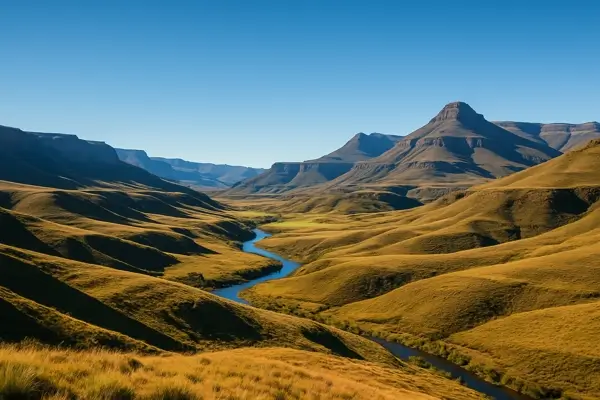
A Landlocked Mountain Kingdom – Lesotho is a landlocked country entirely surrounded by South Africa. It is known for its rugged mountainous terrain, with more than 80% of the country lying above 1,800 meters (5,906 feet) in elevation.
The Only Country Completely Surrounded by Another – Lesotho is the only independent country in the world that is completely surrounded by one other country South Africa.
A Constitutional Monarchy – Lesotho is a constitutional monarchy, where the king serves as the symbol of unity and authority, while the country is governed by a parliamentary system.
Home to the Highest Ski Resort in Africa – Lesotho is home to the highest ski resort in Africa, AfriSki, which offers visitors the opportunity to enjoy winter sports amidst the Southern Hemisphere’s summer months.
The "Kingdom in the Sky" – Often called the "Kingdom in the Sky", Lesotho’s stunning high-altitude landscapes offer breathtaking views of mountain peaks, valleys, and rivers, making it a haven for nature lovers and adventure seekers.
The Lesotho Highlands Water Project – One of the most significant engineering projects in the country is the Lesotho Highlands Water Project, which channels water from Lesotho’s mountains to South Africa, providing a vital water source to the region.
Traditional Culture and Music – Lesotho has a rich cultural heritage with traditional music, dances, and art playing a significant role in daily life. The mohobelo (traditional drumming) is central to many cultural ceremonies.
Rich in Wool and Mohair – Lesotho is one of the world’s leading producers of wool and mohair, which are key industries for the country. The Lesotho wool industry contributes significantly to the economy.
Unique Language – The official language of Lesotho is Sesotho, which is part of the Bantu language family. English is also widely spoken, particularly in government and business settings.
A Nation of Traditional Villages – Much of Lesotho’s population still lives in traditional villages, often consisting of small stone homes and surrounded by the country’s rugged hills, where people practice subsistence farming and herding.
